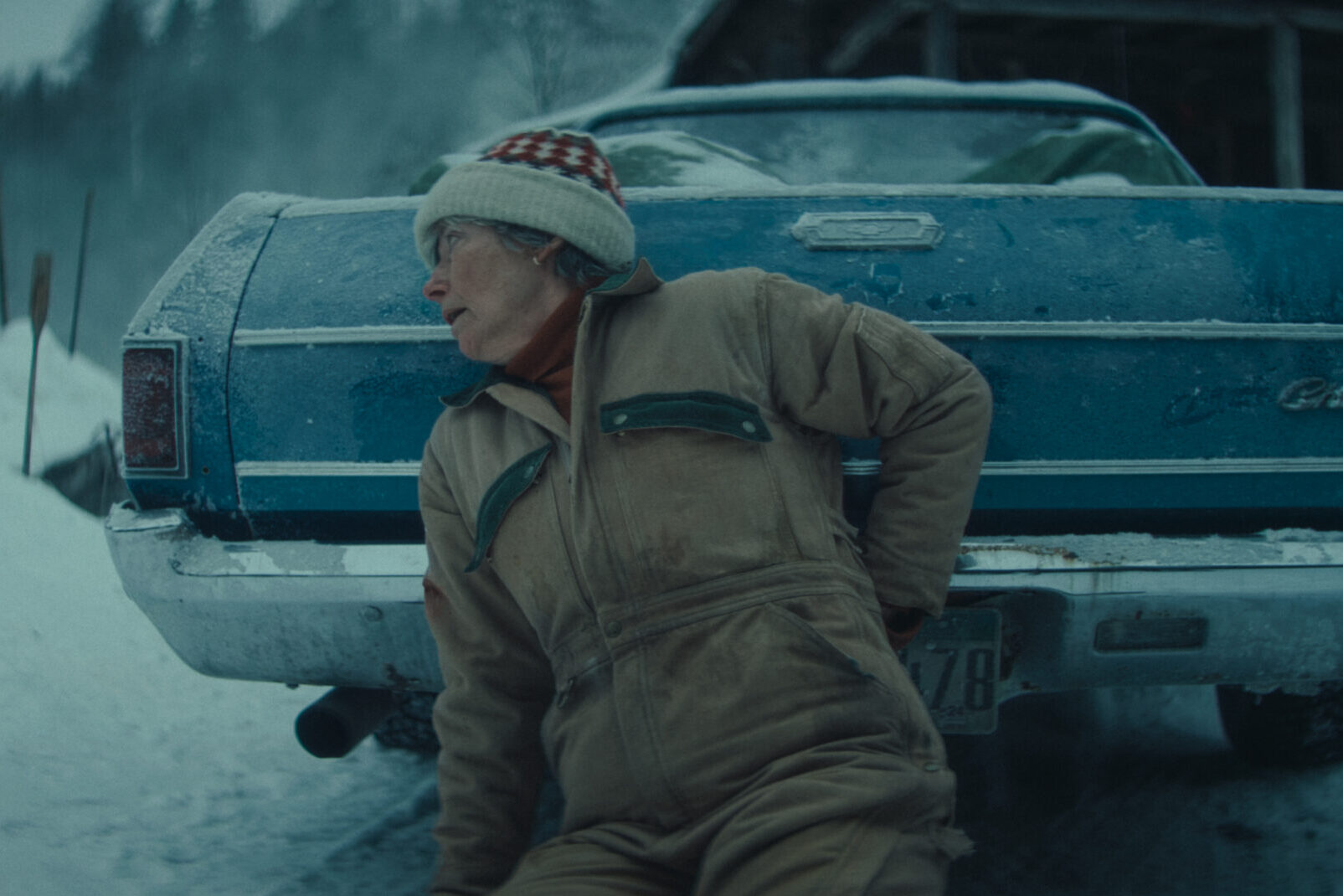Frozen Solid

‘Dead of Winter’ Delivers
Writer Joseph J. Airdo // Phoenix Film Critics Society
Picture Emma Thompson, the dame of British cinema who charmed audiences in “Sense and Sensibility” and made us weep in “Love Actually,” wielding an ax against masked assailants in subzero Minnesota wilderness. If that image seems incongruous, then “Dead of Winter” has already accomplished its first magic trick — upending expectations before the opening credits finish rolling.
Director Brian Kirk, whose television pedigree includes “Game of Thrones” and “Luther,” makes his feature film debut with this taut survival thriller that transforms Thompson into an unlikely action hero without sacrificing the emotional intelligence that has defined her career. “Dead of Winter” proves that the most compelling transformations happen when exceptional actors venture into uncharted territory.
Thompson plays Barb, a grief-stricken woman whose solitary journey through Minnesota’s frozen backcountry takes a harrowing turn when a blizzard forces her to seek shelter at a remote cabin. What she discovers there — a young woman held captive by a desperate couple, played with chilling effectiveness by Judy Greer and Marc Menchaca — transforms her from reluctant witness to unlikely savior.
The film’s premise is elegantly simple, but screenwriters Nicholas Jacobson-Larson and Dalton Leeb understand that the best thrillers emerge from character-driven conflicts rather than plot machinations. Barb isn’t seeking adventure; she’s processing loss and searching for meaning, making her heroism all the more authentic when circumstances demand action.
Thompson delivers a masterclass in physical and emotional authenticity, inhabiting Barb with the kind of lived-in believability that separates great performers from merely competent ones. Her panic feels genuine, her determination earned rather than imposed by genre conventions. This isn’t Thompson playing an action hero — it’s Thompson playing a real person forced into extraordinary circumstances, and the distinction makes all the difference.
The actress, who also serves as a producer on the project, clearly understood that audiences would accept her transformation only if it felt emotionally truthful. Barb never loses sight of her own motivations, creating a character whose heroism springs from necessity rather than nobility.
Judy Greer, long overdue for meatier roles after scene-stealing turns in films like “Jawbreaker,” brings desperate menace to her role as the “Purple Lady,” one half of the kidnapping duo. Her performance avoids cartoonish villainy, instead presenting a woman whose desperation has calcified into something genuinely frightening. Marc Menchaca matches her intensity as her reluctant partner, a man visibly deteriorating under both hypothermia and moral conflict.
The film’s weakest link lies in its victim character, who remains frustratingly underdeveloped despite strong work from young actress Laurel Marsden. While her physical restraints limit the character’s agency, stronger writing could have given her more presence even within those constraints.
Kirk’s greatest achievement lies in his use of the Minnesota wilderness, transforming the frozen landscape into both sanctuary and prison. The director understands that snow isn’t merely scenic — it’s isolating, disorienting, and deadly. Every frame reinforces the characters’ vulnerability, while the stark contrast between white snow and red blood creates a visual language that speaks to the film’s themes of purity corrupted and innocence under siege.
The production design team deserves particular credit for creating a world that feels authentically harsh without becoming punishingly bleak. The cold becomes palpable, making every interior space feel like temporary refuge rather than true safety.
Cinematographer Michael McDonough captures the landscape’s brutal beauty while maintaining the intimate focus necessary for character-driven storytelling. The camera work avoids the showy virtuosity that often mars thriller direction, instead serving the story with workmanlike efficiency that enhances rather than distracts.
The film’s 97-minute runtime proves perfectly calibrated, maintaining tension without overstaying its welcome. While a few sequences test patience — particularly during the middle act’s more methodical character development — the overall pacing serves Kirk’s vision of psychological thriller rather than pure action spectacle.
Beneath its genre trappings, “Dead of Winter” explores themes of grief, redemption, and the lengths people will go to protect what matters most. Thompson’s Barb carries emotional baggage that influences every decision, while Greer’s character represents desperation pushed beyond rational limits. These deeper currents elevate the material above typical thriller fare, creating space for audiences to consider motivations and moral complexities rather than simply root for heroes and villains.
“Dead of Winter” succeeds precisely because it trusts both its star and its audience. Thompson’s career-best work anchors a film that understands suspense emerges from character rather than concept. While certain genre conventions occasionally strain credibility — bullets that consistently miss their marks, characters who function despite serious injuries — the emotional authenticity never wavers.
For audiences seeking intelligent entertainment that respects both their time and their intelligence, “Dead of Winter” delivers exactly what its title promises: a story that will leave you reaching for a sweater and reconsidering what heroism actually looks like. Whether experienced on the big screen or eventually at home — preferably with the air conditioning running at full blast — this is filmmaking that reminds us why we fell in love with movies in the first place.




